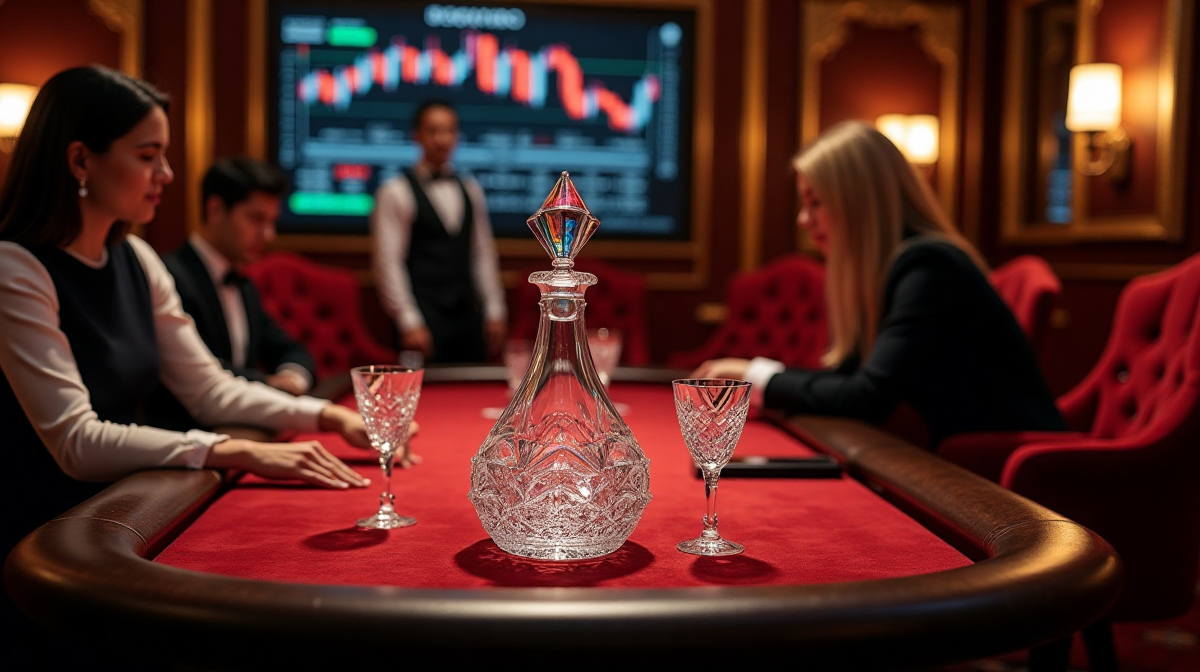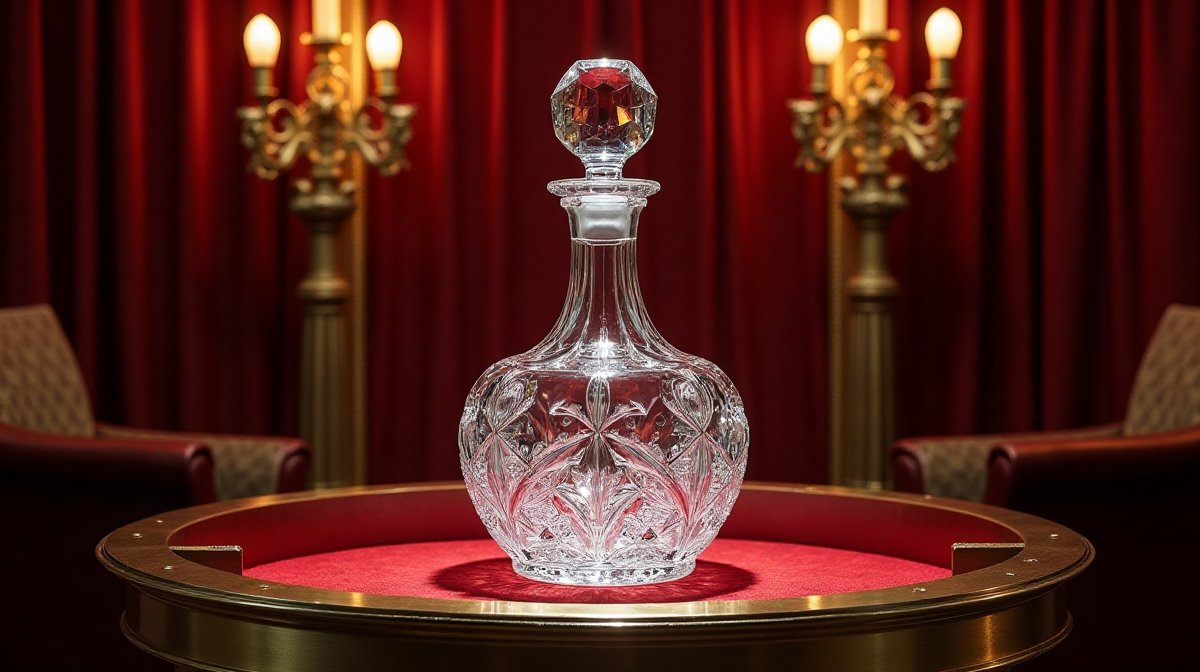Baccarat Glass: Is Yours a Rare Find?
What is Baccarat Glass and Why is it Coveted?
Baccarat crystal, synonymous with luxury and French artistry, has graced the tables of royalty and adorned the homes of discerning collectors for centuries. Beyond its aesthetic appeal, the allure of Baccarat lies in its impeccable craftsmanship, rich history, and the potential for significant value. Many wonder about their own pieces, asking, “What is my stake in this beautiful object?” This article will guide you through understanding, identifying, and potentially valuing your Baccarat glass treasures.
Briefly Explain the History of Baccarat
Founded in 1764 by Louis XV, the Baccarat crystal company began as a glassworks in the town of Baccarat, France. Quickly gaining renown for its high-quality crystal, Baccarat became the preferred choice of monarchs and aristocracy. Throughout the 19th and 20th centuries, Baccarat pioneered new techniques and designs, solidifying its reputation as a leader in the crystal industry. The company’s commitment to innovation and artistry continues today, ensuring Baccarat remains a symbol of French elegance.
Hook: The Potential Value of Your Baccarat Piece
That seemingly simple vase or set of glasses might be worth far more than you imagine. Determining the value requires understanding the nuances of Baccarat production, identifying key features, and researching its history. Understanding your stake in a piece of Baccarat can unlock a surprising financial reward.
Understanding Baccarat – Key Identifying Features
The Baccarat Mark: A Comprehensive Guide
The Baccarat mark is the primary indicator of authenticity. However, understanding the evolution of these marks is crucial.
Different Mark Variations & Their Timelines
Baccarat marks have changed over time. Early pieces (pre-1936) often feature a red enamel mark, while post-1936 pieces typically use a clear, frosted, or acid-etched mark. Marks from different periods can significantly affect the stake property and value. Later marks sometimes include the year of production.
Where to Find the Mark
The mark is usually found on the underside of the piece, often on the base or pontil. Look carefully, as it can be small and sometimes subtly placed.
Identifying Fake Marks
Counterfeit marks are unfortunately common. Pay attention to the clarity and precision of the mark. A blurry or poorly executed mark is a red flag. Also, examine the font and color – inconsistencies can indicate a fake.
Common Baccarat Glass Styles & Patterns
Baccarat produced a vast array of designs, each with its own appeal and value.
Harcourt – Characteristics & Value Driver
The Harcourt pattern, known for its deeply cut flutes and elegant form, is perhaps Baccarat’s most iconic design. Harcourt pieces, particularly those in excellent condition, consistently command high prices.
Millefiori – Identifying Genuine Pieces
Millefiori, meaning “thousand flowers,” involves incorporating colorful glass canes into the crystal. Genuine Baccarat Millefiori pieces exhibit intricate and well-defined floral patterns.
Other Popular Patterns
Vega, with its sleek, modern lines, and Octavie, known for its delicate floral motifs, are also highly sought-after Baccarat patterns.
Materials & Techniques Used by Baccarat
Crystal Composition & Quality
Baccarat crystal is renowned for its high lead content, which contributes to its brilliance and clarity. The precise composition has varied over time, influencing the weight and refractive index of the glass.
Cutting, Engraving & Gilding Techniques
Baccarat artisans employed exceptional cutting, engraving, and gilding techniques to create intricate designs and embellishments. These handcrafted details significantly enhance the value and artistry of each piece. The exquisite detail is often seen in stunning pieces like a baccarat glass decanter.
Factors Determining Baccarat Glass Value
Rarity & Limited Editions
Identifying Limited Production Runs
Pieces produced in limited quantities are naturally more valuable. Identifying these requires researching Baccarat archives and auction records.
The Impact of Discontinued Patterns
Discontinued patterns become increasingly scarce over time, driving up their value amongst collectors.
Age & Historical Significance
Value Based on Era of Production
Early Baccarat pieces, particularly those from the 19th century, typically hold higher value due to their age and historical importance.
Connection to Historical Events or Figures
Pieces associated with historical events or prominent figures can command a premium.
Condition & Authenticity
Assessing Damage
Even minor damage can significantly reduce the value of a Baccarat piece.
Restoration & Its Impact on Value
Restoration, while sometimes necessary, can diminish the authenticity and value of a piece.
Designer & Artist Attribution
Renowned Baccarat Designers & Their Works
Pieces designed by renowned Baccarat artists, like Georges Chevalier, are particularly collectible.
The Influence of Designer on Collectibility
The reputation and artistic style of the designer can greatly influence the desirability and value of a piece.

Rare & Highly Collectible Baccarat Glass Pieces
Exceptional Examples of Valuable Baccarat
Early 19th Century Glassware
Early 19th-century Baccarat glassware, characterized by its intricate cutting and delicate forms, is highly prized by collectors.
Prestige Items
Large, elaborate pieces, such as chandeliers and centerpieces, are often the most valuable Baccarat items.
Works Attributed to Famous Artists
Pieces definitively attributed to famous Baccarat artists command the highest prices.
Specific Patterns Known for High Value
Specific Harcourt Variations
Certain variations of the Harcourt pattern, such as those with unusual cuts or embellishments, are particularly valuable.
Rare Color Variations
Rare color variations, like Bleu de Roi (King’s Blue), are highly sought after and command premium prices. The scent of parfum baccarat rouge is often associated with the luxury and elegance of Baccarat crystal.
Baccarat Glass Sold at Auction – Recent Examples
Recent auction results demonstrate the significant value of rare Baccarat pieces. Items can sell for thousands, even tens of thousands, of dollars.

How to Research & Value Your Baccarat Glass
Online Resources for Baccarat Research
Baccarat’s Official Website & Archives
Baccarat’s official website offers information about the company’s history and current collections.
Online Auction Databases
Online auction databases provide valuable data on past sales, helping you assess the market value of similar pieces.
Reputable Baccarat Collector Forums & Communities
Online forums and communities offer a platform to connect with other collectors and share information.
Seeking Professional Appraisals
Finding Qualified Appraisers
A qualified appraiser specializing in glass can provide an accurate valuation.
The Appraisal Process & Cost
The appraisal process typically involves a physical examination of the piece and a research fee.
Tips for Selling Baccarat Glass
Choosing the Right Sales Channel
The best sales channel depends on the value and rarity of the piece.
Properly Packaging & Shipping Baccarat Glass
Proper packaging is crucial to prevent damage during shipping.
Conclusion
Recap: Key Takeaways for Identifying & Valuing Baccarat
Identifying Baccarat glass hinges upon recognizing the marks, understanding the patterns, and assessing the condition. Research is paramount to determining the true value of your piece. Knowing your stake and doing your homework are the keys to success.
Encouragement: Discovering the Worth of Your Treasure
Don’t underestimate the potential value of your Baccarat glass. With careful research and potentially a professional appraisal, you might be surprised by what you discover.
Final Thoughts on the Enduring Appeal of Baccarat Glass
Baccarat glass continues to captivate collectors and enthusiasts worldwide, embodying a legacy of artistry, innovation, and timeless elegance. Its enduring appeal ensures that Baccarat will remain a cherished treasure for generations to come.

